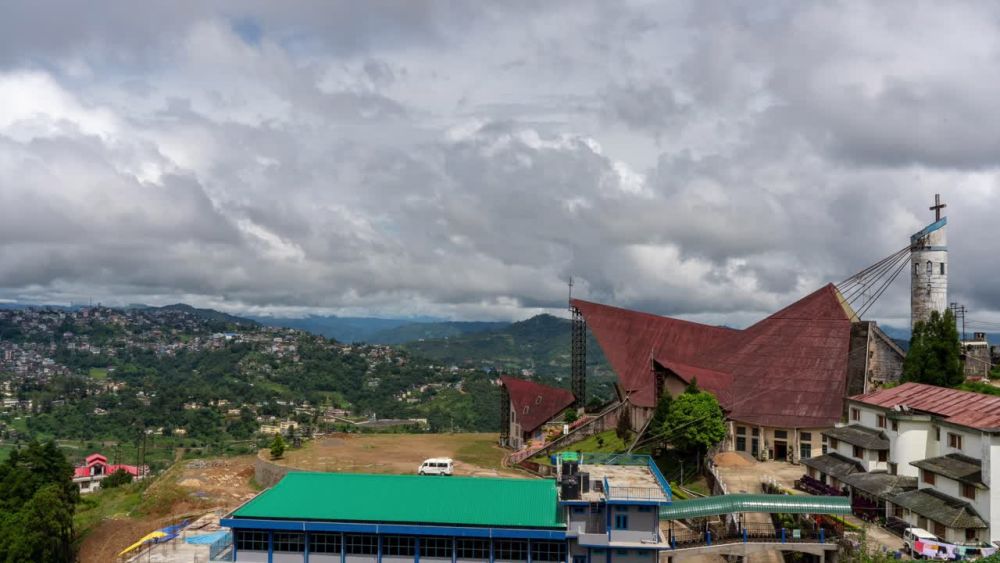

Nestled atop Aradura Hill in Kohima, Nagaland, the Kohima Cathedral is not only a place of spiritual significance but is also known for its exceptional architectural design that blends the essence of local culture with Christian motifs. Often referred to as the Cathedral of the Reconciliation, this Catholic cathedral has become an emblem of peace and a beacon of faith for people across the region and travelers from afar.
The history of the Kohima Cathedral dates back to the early days of Christianity in Nagaland. However, the current structure has a more recent history. The construction of the cathedral commenced in 1986, drawing inspiration from the Naga people's traditional architectural styles. The cathedral was built to serve as a grand symbol of reconciliation in memory of those who lost their lives during the fierce Battle of Kohima during World War II. The cathedral was consecrated in 1991.
Visitors to the cathedral are immediately struck by its majestic facade and the sweeping views it offers of the surrounding landscapes. The church's architecture incorporates indigenous designs, like the incorporation of the Naga house's roof, which symbolizes the people's identity. The crucifix inside the church is another focal point, made from the remnants of bombs from the war.
As for tourism, Kohima Cathedral swiftly became a significant spot not only for pilgrims and devotees but also for history enthusiasts and those seeking to learn more about the region's culture. Its location in Kohima makes it an important stop for tourists who visit Nagaland, especially during the famous Hornbill Festival which occurs annually in December and celebrates the cultural heritage of the state.
In recent years, the state of Nagaland, including its capital Kohima, has become increasingly accessible to tourists, thanks to improvements in infrastructure and a growing awareness of the region's unique culture and history. Ecotourism has emerged as one of the latest trends, with more travelers seeking experiences that are sustainable and respectful of the environment and local communities.
Furthermore, experiential travel is also on the rise, with tourists looking for immersive experiences, such as homestays with local families, participation in traditional festivals, and guided cultural tours. The Kohima Cathedral remains a centerpiece of such experiential tours, offering visitors a profound historical context combined with spiritual significance.
Additionally, awareness and interest in the Northeast region of India have been growing, partially due to the Indian government's 'Look East' policy and investment in the region's tourism sector. The unique position of the Kohima Cathedral amidst this trend has helped to establish Kohima as a must-visit destination for tourists seeking a blend of solemn history, rich culture, and breathtaking natural beauty.
For those wishing to visit the Kohima Cathedral, it's suggested to plan ahead, especially if wanting to coincide the visit with cultural events or the Hornbill Festival. The cathedral is open throughout the year, and visitors are welcome to join the regular services or simply to explore the serene environment and its significant art and architecture.